In the Studio: Silent Servant
Silent Servant (a.k.a. Juan Mendez) is not the average techno producer. Coming of age in […]
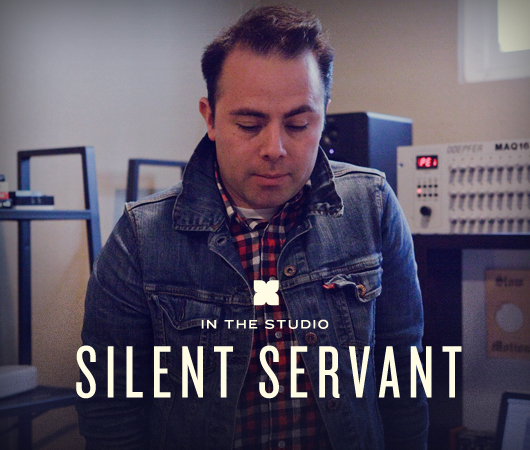
Silent Servant (a.k.a. Juan Mendez) is not the average techno producer. Coming of age in ’90s Los Angeles, he grew up with an equal appreciation for both warehouse techno and DIY noise rock, an unusual genesis that can still be detected in his musical output. At his core, Silent Servant is a maker of dark and dubby techno, but his vision is informed by the sounds of shoegaze, post-punk, industrial, and various strains of leftfield dance music. Though he’s perhaps best known as an affiliate of Sandwell District, Mendez has nonetheless assembled a substantial discography of his own over the years, including last year’s widely celebrated Negative Fascination LP. Curious for more information about his artistic and technical approach, we paid Mendez a visit at his home studio in San Pedro, California (just south of Los Angeles). While there, we snapped some photos, asked questions about his set-up, and gleaned some knowledge about exactly how Silent Servant goes about assembling his tunes.
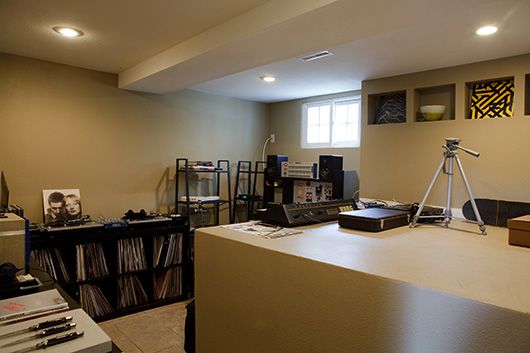
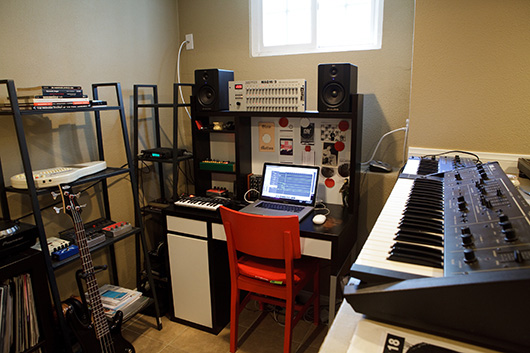
XLR8R: When did you first start producing music of any kind?
Silent Servant: I [made some] stupid stuff in high school, like, high-school/junior-high bands. I wasn’t really ever good at playing anything, so we were just messing around. My friend Cody Gorman, [he and I] had this stupid rock band. We played twice in his garage and I was just like, “This is kind of not for me.” He was a guitar virtuoso, so it was totally not that balanced. But then, for me, I was really into [weekly MTV show] 120 Minutes growing up, so I used to watch a lot of [that]… I was basically liking The Smiths, The Cure, New Order. My Bloody Valentine was happening at the same time, and I heard Sonic Youth and [I thought], “This seems totally possible to do something. I could probably do that.”
But at the same time, when I was 16, I started DJing. We had a guitar at the house, and I remember my brother traded the guitar and the amp for a set of turntables. For me, it was really great. Basically though, the entryway to [dance] music was through going out. In LA, there was a really big house scene with a lot of underground parties. I used to do a lot of silkscreening, so through going out I met some people… [including] this guy Marcus Miller, who is a really good friend of mine. He taught me how to DJ, but also had gear. He had a few keyboards and he always had nice gear, like Juno-106s and all that stuff. We started working together, and then he moved to San Francisco and that’s how I met everyone in San Francisco.
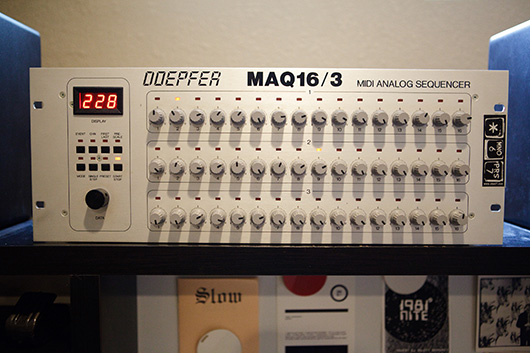
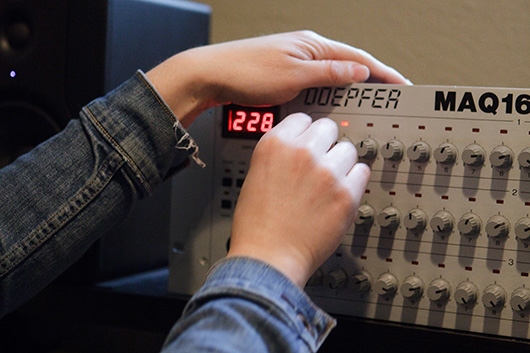
I met Joshua (Kit Clayton), who was pretty much like the clincher—he was the person that really taught me how to make music. I started going up [to San Francisco] and I bought a Roland R-8 drum machine, like the MKII. I bought some [other] pieces of gear and a computer and I was using Cubase. By this time, I was 17, 18 and still living in my parents’ house. I was messing around, figuring things out. I was also buying a lot of records from Submerge and there was this kind of sound that I was trying to make, but I couldn’t figure out how. [Then I would] go up to San Francisco… and Josh was making stuff that [made me say], “This is what exactly what I’m thinking.” Josh has always been technically savvy, so I went to his house and there was a nice mixing desk, sequencers, a Roland A100 system, either the Roland A100 system or a Doepfer, the basic modular set-up. He had a Roland 909 and SH-101 and he was able to get everything triggered and I was like, “This is totally blowing my mind.” [He eventually traded me the Doepfer and the 101 for a sampler I had purchased], and I started realizing that’s how you make techno music. It’s sequencer-based. It made me realize that there’s a really big difference between playing and letting a sequencer control [the music]. That’s how you make a Rob Hood record or that’s how you make a Joey Beltram record.
Josh taught me a lot of stuff about Vocoding and sound and sound processing, and how you get dub effects and all that. It was just tons of information. Josh made me read this Yamaha sound-engineer reinforcement manual, which is the one they make you read only if you go to engineering school. He highlighted chapters and was like, “Okay, read this. You can’t leave until you like you read these chapters.” It was basically like how to set up things, also the understanding of subtractive synthesis and synthesizers. How it works, like an oscillator creates a tone, an envelope filter shapes it, an amplifier amplifies it so you hear it. It’s all these basic things that to this day still are the main things that help me understand how even just to work a basic keyboard.
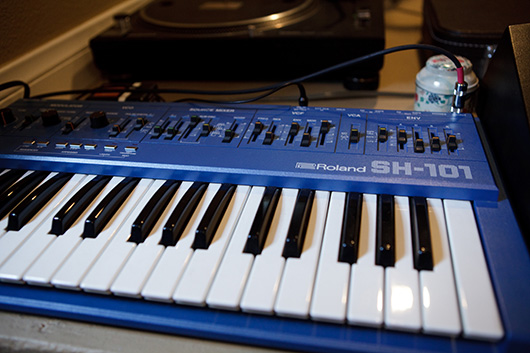
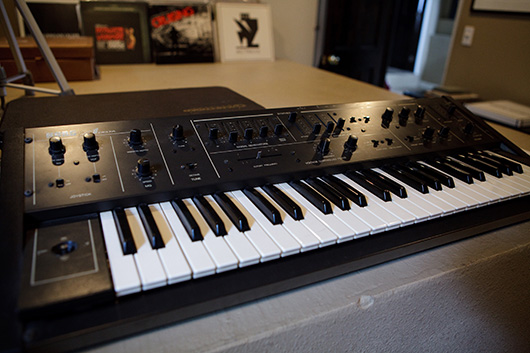
So, from the beginning, you were always using a lot of analog gear.
[When I started], computers weren’t necessarily like [they are now]. Computers were part of it, but there was still a lot [analog gear involved]. I still remember the first time I went to Europe and saw how people ran their studios—there was hardware and then a computer that was basically a master time clock. At that time, to do [heavy] digital processing, you had to have additional gear or computers that were dedicated just to that.
It was very academic, super nerdy. With the people that I knew, I got a really strong exposure to that. I didn’t necessarily understand it—I’m really bad at math. I’m terrible. But on a real basic level, I saw a lot that made me understand enough to take back a little bit with me, like, “Okay, I think I can make something with this information.”
Your current set-up still uses a lot of analog gear.
Yeah. For me, there are just things in the computer… it’s not that I can’t do, but it’s harder for me to do them in a computer. Sometimes, even just running a synth through a pedal—I use a lot of little boutique-y pedals—it’s just the way you can manipulate it. That’s where I’m able to bring back the human element. The computer a lot of the time just works as a hard-disk recorder. Basically, I can run my kicks and then maybe the synths I’ll process outside of the computer, or I’ll run with an external sequencer. I could run it with an internal sequencer in the computer, but with things like the Doepfer, I can never in my mind create the type of patterns that the sequencer does. You get into polyrhythmics and stuff, and there’s no way that I could play, like, a three-note sequence—it just wouldn’t happen. As a human, you’re used to like these normal rhythms. We’re humans, so we have a [certain] cadence. It’s really hard to think off that cadence. That’s why I like using [analog gear].
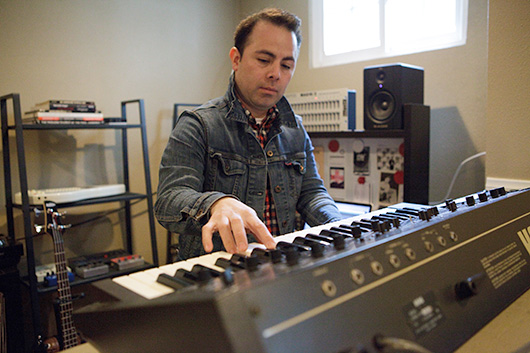
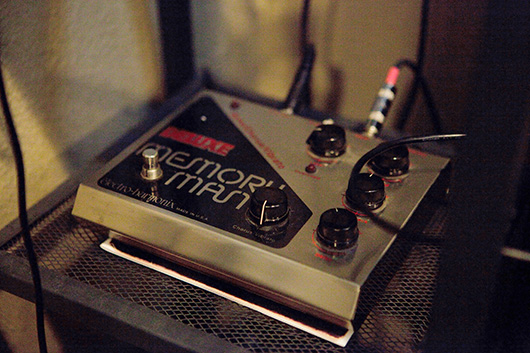
And a lot of the pedals, they create a natural atmosphere that I wouldn’t. I do a lot of stuff where I literally will run an open cable through a pedal, and [I can] just turn the knobs of the pedal and create these kinds of soundscapes that you can’t really create [with a] computer that quickly. Literally, I just drop it on top of the track, and all of a sudden there’s depth, because you added the ambience of the space. I’ve even done a bunch of stuff we were like re-amping. We just plug in something into, let’s say even a weird little modular synth that just creates tones, run it into a Space Echo, run that into a re-amping thing, put the Space Echo into an amp, mic the amp, and then you get the room, you get the pedal, and you get the actual synth. They’re just an atmosphere that’s created, so for me, for techno, things like My Bloody Valentine, things like The Telescopes, things like Flying Saucer Attack—all the stuff that I grew up listening to—still have a real big part in everything that I do, because that stuff is all very atmospheric. I always really appreciated that music; that’s why I love early Basic Channel, because there’s a real big sense of space and sometimes that is only created through ambience. With a computer, you can create reverbs. But you can tell when they are these tight digital reverbs or digital delays—they ping-pong, they don’t feed back into themselves, and they’re not endless. I use an Electro-Harmonix Memory Man sometimes, because the Memory Man would feed back forever, like it would blow a speaker if it was loud enough. That’s where all that stuff comes into play for me. It’s very tactile stuff that helps create ambience and just creates depth overall. To be honest, it’s more fun. If you go to my office, I like looking at that stuff. I like to look at my little weird pedals that have little rayguns on them. It’s part of [what] makes it interesting.
So, what is your actual set-up these days? What software are you using? What are the main pieces of gear that you’re using?
I use the latest version of Logic. I’m just running Logic as the main sequencer, and then I use lot of internal synths. There’s one called the ACE by u-he that I used quite a bit on the LP. There’s another one, the Axon by Audio Damage. Those are the digital synths. I use an SH-101. Actually, I use a pocket piano a lot. It’s weird because the pocket piano seems like a toy, but it’s kind of a raw oscillator. I use it a bunch for tones—just sequence tones—and also harmonics. I use a Korg Delta for strings a bunch and the SH-101 again for sequence-synth stuff that I bring back into the computer, because it’s running through the Doepfer, CV-trigger style. The computer just becomes a master controller. As far as drums, I’ve been using the Ultrabeat a lot; Ultrabeat is the native drum machine in Logic. What I’ve realized over time [though is that] EQing is crucial—especially for kicks and stuff. Some people will be doing crazy layered kicks, and that works too, but the way I’ve been doing it is that I just try to create things and then EQ them as much as I can to get to them to sound good. That’s kind of it. I do the basic rhythmic stuff [with a] drum machine, the synth line is run by the Doepfer, and then it’s all about creating the atmospheres with different little things, like pedals.
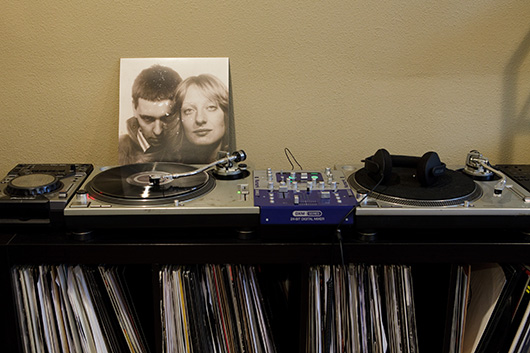
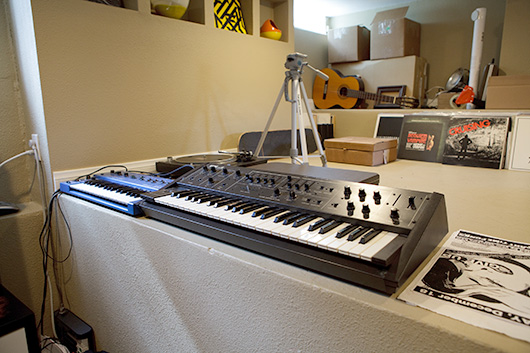
Do you usually add the atmospheric elements after the songs have been put together?
It depends. A lot of times, we’ll do sessions and create these atmospheres. It sounds cheesy, but literally it’s kind of what we do. I’ll start with a synth sequence and there are little weird things [that occur]. For example, when you start with drums, you usually end up with drums, so I’ll usually try to come up with an interesting synth pattern and once that synth pattern has kind of started, I’ll start adding processing and atmospherics. Then I’ll add the kick, and see where the kick lands. That’s where it gets interesting, and you go from there. But usually, to be honest, the starting point is almost always with the sequence. [Once I have that], sometimes I’ll have just a keyboard open and I’ll just play strings over it, or start playing stuff and see how it sounds in conjunction with the sequence.
How do you approach mixdowns? Do you do your own mixing?
With that, I’ve realized it’s just getting your tracks mixed as well as you can, while leaving headroom. I get it to where I think it’s good, and then we send it to someone to master it—typically, that master will be a large improvement of whatever I send him.
That’s where [DJing] has actually helped a lot, just realizing what things sound really good and what things sound really crap. For example, I did the first Negative Fascination 12″. The kicks on it are terrible. When I’m DJing, if I play the vinyl, I have to max out the kick to match other records because I was using crappy kick drums. I wasn’t EQing them properly. There’s a little bit of trial and error, and the understanding of when something’s amplified, what frequencies need to be there. We’ve been lucky enough where we would finish cuts before our Sandwell nights at Berghain. We would do soundcheck and literally test the records and say, “Alright, that sounds awesome,” or “That’s got too much bass” or “It needs a little sub.” And we just do these minor tweaks after listening [to the music] that loud. I know that’s not something everyone can do, but [it ‘s important to understand] that things that you don’t necessarily hear, things you won’t hear [unless] they’re that amplified, like the sub-frequencies, how important they are and [that] if they’re not there, things will sound really thin.
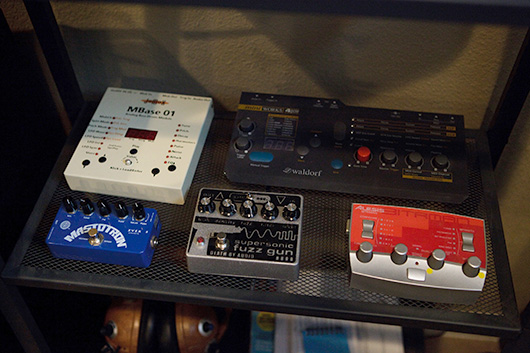
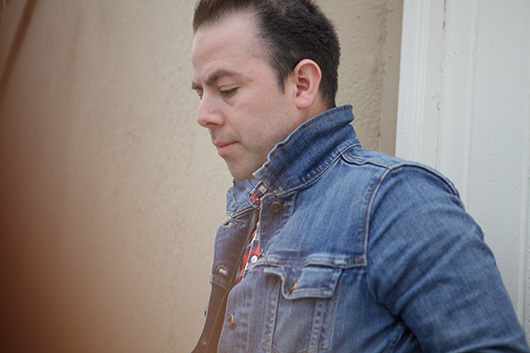
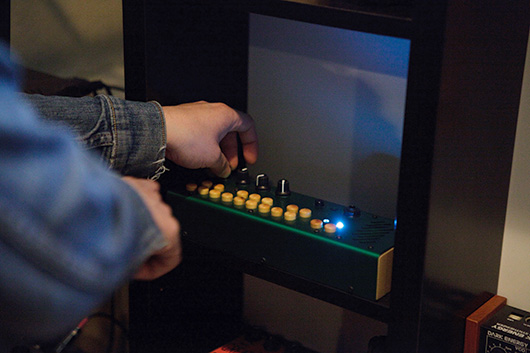
It’s paying attention to your equalization and just how things are hitting and also making sure that things don’t get too muddy, because if there’s too much low-end frequency and things are fighting, nothing cuts through. Things have to cut through to make an impact, especially with techno. There is an element of that—rolling off certain bassline frequencies, making sure your bassline and your kick aren’t clashing too much, and rolling off certain dBs of the bassline that you won’t necessarily even hear, but the fact that they’re in there, it will fight the kick. There are a bunch of different ways to do that, like there’s gated compression. I’m personally not that technically savvy to do that, where every time the kick hits, the compressor is rolling off the bassline, but then it comes back in when it kick is off. There’s weird stuff that I don’t do, because I just don’t know enough about it. I found what works for me just by EQing and spending time EQing.
And then, no matter what, having a professional person [come in after you’re finished]. You can have them do your mixdown or mastering. It is worth it, especially if you don’t know what you’re doing, because they’ll tell you what you’re doing wrong. Still to this day, I know our guy that cuts our records, and I give him files a certain way. If I send them to [another mastering house], [they don’t] like them. [They tell] me that things are way too hot or there’s too much bass frequency, [and that] I need to roll things off and then they’ll adjust it. All of that depends on your mastering guy. That’s something that’s important too, building relationships so people understand how you make music and how to make it better, because they’ll be able to do that.
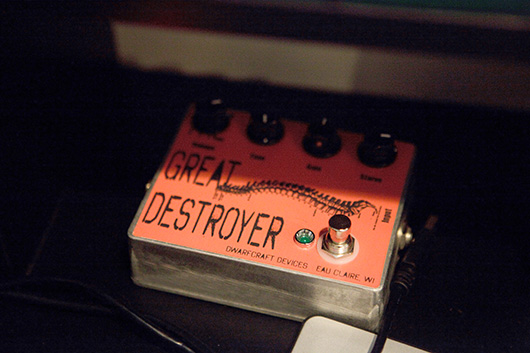
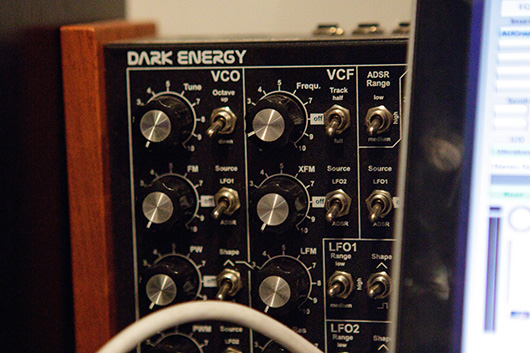
On the Negative Fascination album, there are tracks that are techno and are meant to be played in a club, and there are some that are definitely not. Do you approach those songs differently in terms of a production standpoint?
Yeah. You know… I like kind like tinny, low-fi drum machines. Some people hate them, but that’s the thing—even in clubs, depending on the size of the room and the system, certain records would sound good and some won’t. For example, some Luke Slater records in a big club, [they sound] amazing. You try to play those records in small, hundred-person room, and there’s not enough bass frequency in the system to manage it. For example, the post-punky stuff [I make], it’s more punchy. There’s not as much sub. Sub is really great, but it depends on context, like it’s great when dub records have a lot of sub and they’re bassy. But for me, I really like that cutting, more abrasive stuff. I’ve used things like an Omnichord for drums. It has a really cool, low-fi drum machine that’s really Cabaret Voltaire-esque. People use Roland 707s or 626s—they have that tinny kind of thing too. For me, I just really appreciate the authenticity of certain things. I also like when people can mix it and do it well—I’m not the best at that. When I use bassy drums on, let’s say, broken synthy stuff, it ends up sounding like Miami bass or something. It just doesn’t work for me.
What would you say is your favorite piece of gear you have?
Personally, I would [say] the Doepfer MAQ16/3. It really changed the way I make music and for me, it made things better. It just made it easy to work and it took a lot of the guesswork out of it, because it is so basic. Mono sequencers, with the patterns that you can create and the types of note sequences… my mind can never create that, so the Doepfer is hands down my favorite thing.
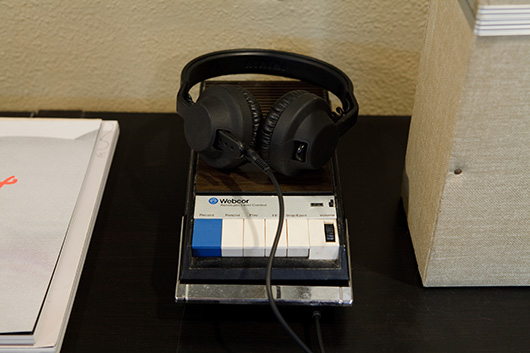
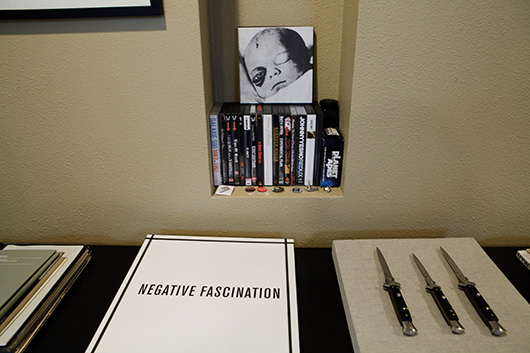
Your songs have lots of layers of noise, ambience, and other elements. How do you know when they’re done?
When it feels right. I know it’s cheesy to say that, but if it feels like there’s enough. Sometimes it’s good to have someone to bounce stuff off of. I know not everyone has that, but sometimes I’ve made stuff and I’ll be like, “I really like that sound,” and someone will be like, “That’s really annoying. That just sounds weird.” And then we change it and it’s better. It’s trusting your own instinct. I think the main thing is just finishing. [You have to] start and finish. I know a lot of people have that problem… and I say you just have to finish it.
Who do bounce things off of?
Usually it’s always Karl [O’Connor (a.k.a. Regis)]. I’m very fortunate to have that kind of person. He’s been really great at just saying [whether something is] cool or not. I guess over time you [also] start trusting your own instinct once you have had some things that work. The main thing is knowing your own shortcomings. Once you know what you are bad at, you’ll just try to focus on the positive things you know you’re good at. That’s really the only way… knowing your limitations and working within them. It’s usually what works best.

